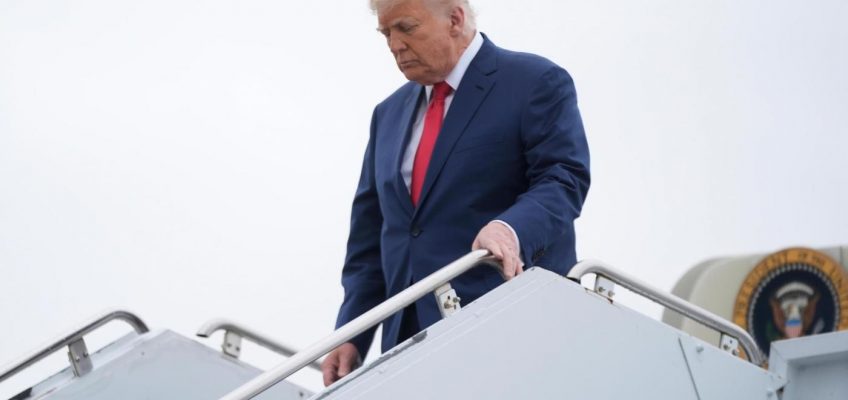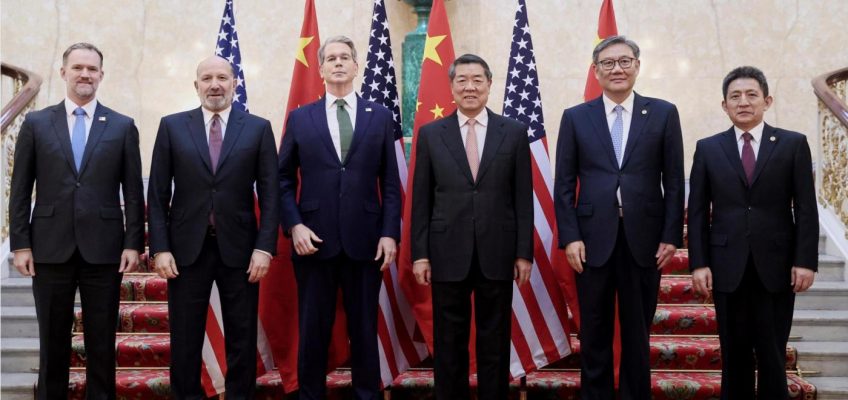Editor’s Note: The following is excerpted with permission from Art Above Everything: One Woman’s Global Exploration of the Joys and Torments of a Creative Life (Beacon Press; June 10, 2025).
My dad drummed for presidents once. He drummed for admirals and ambassadors, movie stars and ministers. He drummed in halftime showcases of the NFL and Mardi Gras parades in New Orleans. He drummed in nightclubs from Amsterdam to Yokosuka.
Long retired from the U.S. Navy jazz band that sailed him around the globe, Dad mostly drums in the garage now. His audience consists of Mom and me as we carry groceries from the car. Every time I pass him, during my brief visits home to Corpus, I think, I really should sit with him. Sit with him, listen to him, maybe even sing along when he switches to the keyboard, like I did when I was little. We especially loved the chorus of “The 59th Street Bridge Song” by Simon and Garfunkel: All is groooo-vy. But there are always meals to prepare, errands to run, tías to greet. Before I know it, Dad is driving me back to the airport.
Today, however, I set down the groceries and pull up a chair. Dad is practicing the rudiments, but, sensing my interest, he starts striking the snare again and again, revving it like an engine, before volleying from tom to tom so that the sound swells and drops, swells and drops. His sticks move so fast, they blur. A thunderclap of cymbals detonates a kick pedal boom that blasts me through the cosmos.
“Do you ever miss performing?” I blurt out, once I’ve recovered.
“Well, sure. Sure I do,” Dad says. His beard, once thick and red, has thinned and whitened. Sunspots speckle his hands.
“But . . . I did it!” he says, then flashes his million-watt grin. With that, he returns to his sticks.
In his ninth year of Alzheimer’s, Dad loses the ability to walk. We decide as a family to move him into a neighborhood facility. Once a month, I fly to Corpus to discover something new he cannot do. How to brush his teeth. How to slip on his shoes. How to feed himself. How to talk. This month, it’s eye contact. His indigo eyes cannot find mine. Desperate to connect, I notice that—while his hands have long since curled into fists—there is still enough room for a drumstick. I slide one in until it feels secure, then raise up a book to meet it. Nothing happens. I tap the book against the drumstick, for encouragement. Still nothing. Dad stares off into space for a moment before closing his eyes. Mind racing, I remember the chant he once sang to his students to teach a particular groove.
“BOOM get a rat-trap/bigger than a cat-trap/BOOM!” I call out.
Dad’s eyes flutter open. A long moment passes. He taps out the groove, faintly but perfectly. Drumming is no longer his livelihood. It is his lifeline.
The night Mom texts me to come home, I am at a dinner party 550 miles away. Another guest takes one look at my shaking shoulders and insists on driving. It is nearly 10 p.m. by the time I’ve thrown mismatched clothes into a suitcase and locked up the house where I’ve been writing for the past two weeks. As we peel out of Marfa, the night air fills with skunk. I breathe in the musk, like Dad would do. Once, when he was little, his dog got sprayed while they were romping around the park. He has claimed to love the stench ever since, as it induced his favorite childhood memories. Riding sleighs with his brother Reed at Christmas. Pounding the beat in the high school marching band. The Mexican in me knows this skunk is a sign, then. I spend the next 545 miles trying not to interpret it.
We pull up to the care facility just after sunrise.
“Daddy, I’m here,” I call out as I enter his room.
Dad’s expression does not change, but there is movement beneath the blanket. I lift up a corner. His fist rises, as if in greeting. I wrap one hand around it and caress his face with the other. His indigo eyes are wide open. Peering into them, I chant words of love and gratitude. He moans in response.
At some point in the hours that ensue, Mom drives home for a shower. Holding our dad in our arms, my sister Barbara and I play his favorite songs. John Denver’s “Rocky Mountain High.” Judy Garland’s “Somewhere Over the Rainbow.” Frank Sinatra. Then I cue up Simon & Garfunkel’s “59th Street Bridge Song.” Moments after the chorus ends—All is groooo-vy—a nurse walks in. I peel my eyes away from Dad’s to ask how much time we have left. A couple of days, she says. His skin isn’t mottling yet. His legs are warm. His vitals have stabilized. There is still—
Barbara gasps. I look down. Dad is gone.
It is still dark the next morning when Alex, my sister’s husband, knocks on the door of my childhood bedroom. I roll out of bed and join him in the garage. He is breaking down the drum kit Grandma Madge bought Dad some sixty-five years ago. Prior to entering the care facility, Dad played it every day. I grab the throne, turn it upside down, and stare at the wingnuts. When I was little, I prided myself on knowing how to collapse every tripod in the kit. The muscle of that memory has since atrophied. I serve instead as the roadie, grabbing the pieces Alex disassembles and packing them into the trunk.
From Weber Road, we hang a left on Ocean Drive. The bay stretches out before us, black ink with white swells. We pull into Cole Park and set up Dad’s kit at the water’s edge. Alex, a professional photographer, grabs his Nikon and lenses. We kneel before the kit, waiting. Finally, the sun breaks the horizon. Its fire illuminates the bay, shimmering the cymbals. Alex photographs the kit from every angle, crouching, tiptoeing, lying flat on the damp grass, before turning to me and nodding. I have neither dressed nor groomed for this occasion but do as requested, stepping into the camera frame. Dad’s last sticks crisscross the floor tom. I take them into my hands. The blond wood is splintered from years of grazing rims. This is the closest I will ever come to holding his hands again.
A pair of early morning walkers pause and smile. They expect a concert to spring from my hands. A man on a bike stops to listen too. I look down at the kit. In a parallel universe, I would rub these sticks together, and thunder would follow. Yet somehow, in our forty-five years of co-existence, I never took one lesson from Dad. I don’t even know the proper way to hold the sticks. After an anxious moment, I raise them above my head and smash them atop the high tom, with enthusiasm, with love, but with nothing resembling skill.
My audience turns on their heels and walks away.
Nine days later, we place the cherrywood box of Dad’s ashes on the altar of a funeral home. Seventy of his closest friends, family, and former students file into the pews behind us. I give the eulogy. Barbara and Alex light the candles. My nephew Jordan gives the reading. We pass around baskets of CDs from Dad’s vast collection. An hour from now, Dad will receive a military sendoff at the Coastal Bend State Veterans Cemetery via a seven-gun salute. But first, we must give him his artist sendoff.
I play over the loudspeakers an excerpt from a jazz concert Dad played in Japan in 1961. Called “Skin and Bones,” the song features a two-minute drum solo. Dad utilizes the entire kit, unbelievably fast but with total control, manipulating the dynamics so that the sound swells and subsides, swells and subsides. Not even the saxophonists can keep up. His long-ago audience cheers him on—and soon enough, the attendees at his funeral do too.
Next, I screen a video of Dad playing a military march against the breakfast table. He is wearing his navy cap and windbreaker. It is our last Thanksgiving together. After zooming in on his hands, the camera pans over to those of his granddaughter, Analina, accompanying on doumbek. Dad started teaching her on a practice pad when she was five years old. When she finally graduated to his kit, the power transfixed her, as did the pleasure. By eleven, she had a sparkly gold kit of her own, which she played for hours each day. Upon graduating from St. Mary’s, she will take her sticks to the sea as Dad once did, only aboard a Carnival cruise ship instead of a naval aircraft carrier.
In the video, Analina never takes her eyes off her teacher. Though capable of thunder, she abides by his slow, steady pulse. When the video ends, she squeezes the hand of her girlfriend before rising from the pew. Standing beneath the cherrywood box is Dad’s longtime throne. Analina takes her seat upon it. Before her is a snare drum and a pair of sticks. She slowly drops one stroke, then another, again and again, until she has created an opening roll. She segues into a sampling of the rudiments Dad taught her. Paradiddles. Flams. Single and double stroke rolls that predate the American Revolution, that signal to soldiers when to rise, when to fire, when to retreat. And finally, the “Downfall of Paris.” It is riveting, especially when Analina incorporates Dad’s signature move, slipping a drumstick under her right armpit after striking the left stick on 1, striking left again on 2 before transferring the stick to her right hand for the strike on 3, then removing the pit-stick with her left hand and slamming both sticks down on 4. From there, she transitions into her own improvisation. Something like jazz, but at a speed metal pace. Her skill is atavistic.
Suddenly, Analina dips her head. Grief seems on the verge of overwhelming her—until something visibly intervenes. It straightens her spine, steadying her gaze.
“I don’t believe in god or the afterlife, I am not spiritual,” Analina will explain later. “But at the funeral, when I was closing it out, over my right shoulder, where his ashes were, he said, ‘Bring it back now, bring it back.’ It was so insane. I had never felt anything like that before in my life. But I felt it.”
Everyone in the funeral home feels it too. My father is actively channeling his art through his granddaughter. By and by, their double strokes start slowing, closing the roll. But their final beat lands like a roar.
The post Art Is Immortality appeared first on The Texas Observer.




